Medinah, a region nestled in the western part of Saudi Arabia, boasts a unique geographical location and climate that contribute significantly to its agricultural richness. Positioned between the Red Sea and the vast desert expanse, Medinah enjoys a climate that is characterized by hot, arid summers and mild winters. This distinctive climatic condition, combined with fertile soil and an abundant water supply from underground aquifers, provides an ideal environment for diverse agricultural practices.
Historically, Medinah has been a cornerstone of agricultural development in the Arabian Peninsula. The region’s strategic location along ancient trade routes facilitated the exchange of agricultural knowledge and techniques, fostering an innovative agricultural landscape. Agriculture in Medinah has been integral not only in sustaining the local population but also in contributing to the region’s economic growth. The city’s historical significance is further underscored by its connection to Islamic heritage, where it has served as a pivotal center for trade and agricultural exchange.
Today, Medinah’s agricultural landscape is renowned for its diversity, with 28 unique varieties of crops being cultivated. This includes a wide range of fruits, vegetables, grains, and herbs that are well-adapted to the region’s climate. From the luscious dates that are synonymous with the region to the aromatic herbs that enhance its culinary traditions, each variety represents a facet of Medinah’s rich agricultural tapestry. This diversity is a testament to the region’s longstanding commitment to agricultural excellence and sustainability.

As we delve deeper into the agricultural diversity of Medinah, we will explore each of these 28 unique varieties in detail, uncovering the traditional practices, modern innovations, and cultural significance that make this region a beacon of agricultural abundance. The exploration of Medinah’s agricultural landscape not only offers insights into the region’s heritage but also highlights the sustainable practices that ensure its continued prosperity.
The Top Varieties Cultivated in Medinah
Medinah is renowned for its rich agricultural diversity, cultivating a wide array of crops that flourish in its unique climatic conditions. Among the top varieties grown, the Ajwa date stands out, revered both locally and globally. Known for its rich, dark color and sweet taste, the Ajwa date thrives in Medinah’s hot and dry climate, making it a staple in the region’s agricultural output.
Another notable variety is the Medjool date, often referred to as the “king of dates.” This variety is larger and sweeter compared to others and requires a significant amount of water, which is efficiently managed through Medinah’s advanced irrigation systems. The Medjool date’s high demand and economic value make it a pivotal crop for local farmers.

Medinah is also home to the Barhi date, which is distinctively softer and more syrupy than its counterparts. This variety is typically harvested in its yellow, crunchy stage but can also be consumed when fully ripened to a brown hue. The Barhi date’s versatility and unique taste make it a favorite among consumers.
Beyond dates, Medinah’s agricultural landscape includes the cultivation of the Sukkari date, known for its golden hue and caramel-like sweetness. This variety is particularly favored during the Holy month of Ramadan due to its nutritional benefits and energy-boosting properties.
The Khalas date is another prominent variety, cherished for its balanced sweetness and fibrous texture. It is often used in traditional dishes and desserts, showcasing the cultural significance of date farming in Medinah.
Medinah’s agricultural prowess is not limited to dates. The region also cultivates a variety of citrus fruits, including the Jaffa orange, known for its vibrant color and juicy flesh. The Jaffa orange thrives in Medinah’s well-drained soils and warm temperatures, contributing to the region’s diverse fruit production.






Furthermore, the Nabq tree, or Ziziphus, produces the Sidr fruit, which is highly valued for its medicinal properties and nutritional content. The Sidr fruit is small and round, offering a sweet and tangy flavor, and is often used in traditional remedies and health products.
Lastly, the Medinah pomegranate is celebrated for its large, red seeds and refreshing taste. This fruit benefits from the region’s abundant sunlight and meticulous cultivation techniques, ensuring high yields and quality produce.
These varieties not only highlight the agricultural diversity of Medinah but also underscore the region’s commitment to maintaining a balance between traditional farming practices and modern agricultural advancements. The unique characteristics and growing conditions of each variety contribute to Medinah’s reputation as a hub for high-quality and culturally significant agricultural produce.
Sustainable Farming Practices in Medinah
Medinah’s agricultural sector has embraced a range of sustainable farming practices to cultivate its 28 unique varieties of crops. A cornerstone of these efforts is water conservation. Given the arid climate, efficient water use is crucial. Techniques such as drip irrigation and rainwater harvesting have been widely adopted. Drip irrigation, in particular, minimizes water wastage by delivering moisture directly to the plant roots, thereby enhancing water use efficiency.

Organic farming techniques are also prevalent in Medinah. This approach avoids synthetic fertilizers and pesticides, relying instead on natural alternatives. Composting, for example, recycles organic waste into valuable soil amendments. Biological pest control methods, such as introducing beneficial insects, help manage crop pests without harming the environment.
Modern technology plays a pivotal role in Medinah’s sustainable farming. Precision agriculture tools, including GPS and remote sensing, allow farmers to closely monitor crop health and soil conditions, enabling more precise application of water and nutrients. These technologies help optimize resource use and reduce environmental impact.
Local initiatives and government programs further bolster these sustainable practices. The Ministry of Agriculture has launched several programs promoting sustainability, such as subsidies for water-efficient irrigation systems and training sessions on organic farming. Additionally, community-led initiatives encourage farmers to share best practices and resources, fostering a collaborative approach to sustainable agriculture.
Through these diverse sustainable farming practices, Medinah ensures the long-term viability of its agricultural sector while safeguarding its unique crop varieties and the environment.
Soil management is another critical component of sustainable agriculture in Medinah. Farmers implement crop rotation and cover cropping to maintain soil fertility and structure. Crop rotation helps prevent soil depletion by alternating crops that contribute different nutrients to the soil. Cover crops, such as legumes, are planted to protect the soil from erosion, improve its organic matter content, and fix nitrogen levels naturally.
The Impact of Medinah’s Agricultural Diversity on the Local Economy and Community
Medinah’s agricultural diversity plays a pivotal role in shaping both the local economy and the community. The cultivation of 28 unique varieties of crops has significantly bolstered local livelihoods, offering a stable income source for numerous families. This variety not only contributes to food security but also fosters community development through sustainable agricultural practices.

Local farmers have greatly benefited from the diversity of crops grown in Medinah. For instance, the Al-Hadi Cooperative, a collective of small-scale farmers, has seen remarkable growth in recent years. By cultivating a mix of traditional crops like dates and newer varieties such as avocados, they have managed to maintain a steady income throughout the year. This diversification has allowed them to tap into different markets, both locally and internationally, thereby ensuring economic stability.
Moreover, the diverse agricultural output has led to the establishment of several agro-based industries in Medinah. These industries not only create job opportunities but also contribute to the overall economic development of the region. The local markets are thriving, with farmers selling a wide range of fresh produce, which in turn attracts tourists and boosts the local economy.
However, the community does face challenges in maintaining this agricultural diversity. Issues such as water scarcity, climate change, and limited access to modern farming technologies pose significant threats. To address these challenges, local authorities and agricultural organizations have implemented various initiatives. Programs focused on sustainable farming practices, efficient water usage, and the adoption of innovative technologies are being promoted to ensure continued growth and prosperity.
Medinah’s agricultural diversity is a cornerstone of the local economy and community. It supports livelihoods, enhances food security, and fosters development. While challenges exist, proactive measures are being taken to address them, ensuring that Medinah’s agricultural sector remains robust and continues to thrive.



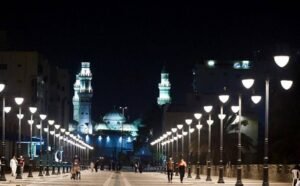

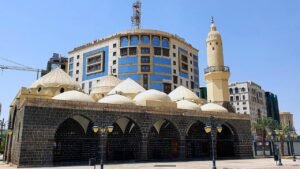
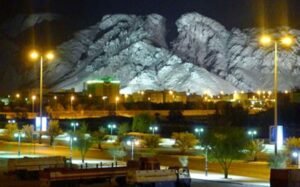



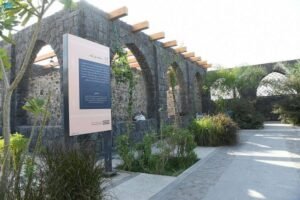








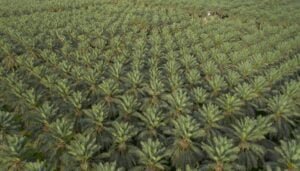






+ There are no comments
Add yours